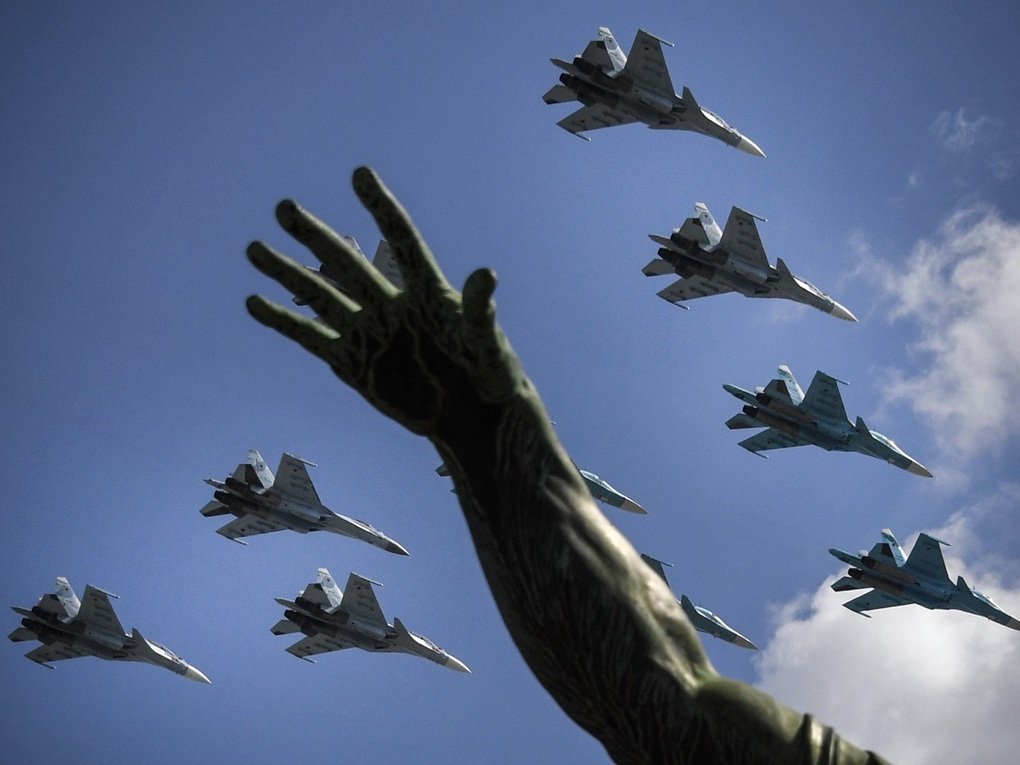(Dan Tri) – Russian military expert Alexey Lenkov has admitted that the misuse of the Russian Air Force’s Su-35 fighter over Ukraine caused heavy damage to this fighter line.
Su-35, Su-34 and Su-30SM fighter squad paraded on Red Square in Moscow in 2020 (Photo: AFP).
Erroneous tactics of the Russian Air Force in the early period
At the beginning of the conflict in Ukraine, Russia’s Su-35 fighter jets exceeded expectations in air combat.
But a few weeks ago, the official spokesman of the Su-35 manufacturer in Komsomolsk-on-Amur admitted that the performance of this fighter in Ukrainian airspace did not meet expectations.
Russian military expert Alexei Leonkov provides valuable insights into this seemingly contradictory situation.
It was originally designed for air superiority, or to attack ground targets with bombs or air-to-ground missiles.
With outstanding maneuverability, a maximum speed of Mach 2.5, impressive weapons, and a modern radar and avionics system, the Su-35 is of course superior to the Ukrainian MiG-29 or Su-27.
However, due to the heat of the front, many times the Su-35 was forced to lower its altitude even though it was an air superiority fighter.
It was the need to bomb conventionally using this classic method that brought the Su-35 directly into the destruction zone of Ukraine’s fixed or mobile air defense weapons, especially the Stinger shoulder-fired missiles that the US Academy used.
Russia admitted: `Ukraine’s dense network of low-altitude air defense systems poses a formidable challenge, even for superior aircraft like the Su-35.`
By November 2023, a total of 5 Su-35s were shot down by Ukrainian air defenses.
Another factor to keep in mind is the possibility of human error.
Furthermore, it is important to note that aircraft performance depends on high-quality, consistent support and maintenance.
In addition, the fact that Ukrainian fighters do not operate regularly on the Ukrainian battlefield makes the Su-35 `unemployed`, making some people consider it a failure.
Interestingly, analysts believe that the Russian air force commander may have realized the threat of the Su-35 to Ukrainian air defense missiles such as Patriot, IRIS-T, NASAMS or S-300.
The factors analyzed above force the Russian Air Force to change the approach of their No. 1 main fighter in Ukraine from the beginning of 2023, when the Su-35 flies far away from the front line, ready to

Russian Su-35 fighter opens fire (Illustration: Telegram).
With this new tactic, expert Ashish Dangwal said that the Su-35 `forced Ukrainian fighters to operate at lower altitudes`.
However, unlike Russia, Ukraine suffered almost no losses, they simply had few combat aircraft, besides, those precious aircraft were used to launch long-range weapons aided by the West.
Will the Su-35 or Su-57 be the future of the Russian Air Force?
After a recent analysis carried out in the US for the year 2024, a significant change in Russian fighter aircraft production was observed.
However, this does not make the Su-35 less effective.
Considering the significant amount of misinformation circulated by both sides, accurately determining the effectiveness or lack of information about the performance of this fighter line on the Ukrainian battlefield is quite difficult.
American analysts believe that the Su-35’s declining reputation in Ukraine is the catalyst that makes customers who seem certain to buy this aircraft `frustration`.
It is clear that Washington is making every effort to prevent countries like Egypt or Indonesia from purchasing the Su-35 through the US enforcement of CAATSA law (Countering America’s Adversaries Through Sanctions Act), which could cause

The Russian Su-35 will be the main opponent of the F-16 in the skies of Ukraine (Photo: Artileri-news).
The Su-35 is not just a `paper tiger`
The Su-35 is a modern, multi-role fighter aircraft, produced by the famous Sukhoi Design Bureau in Russia.
Its design is for long-range air superiority, with exceptional versatility.
In terms of technology, the aircraft possesses many advanced features, when equipped with two AL-41F1S engines, generating a maximum thrust of 142 kN when activating the afterburner, helping to reach a maximum speed of Mach 2,
The operating range of the Su-35 is quite astonishing.
When it comes to avionics, it excels with a host of high-tech systems such as advanced digital software flight controls, a modern glass cockpit filled with displays and system-mounted pilot helmets.
The Su-35’s target detection ability is supported by the Irbis-E passive electronically scanned array radar, which can detect air targets at a distance of up to 400km and track up to 30 targets simultaneously.
Last but not least, the Su-35’s weapon system is very diverse and powerful;
